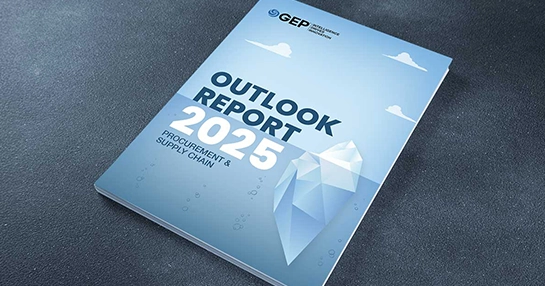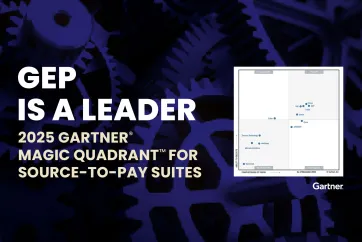
5 Ways AI is Revolutionizing Third-Party Risk Management
- Businesses must identify and stay prepared for potential threats by strengthening their third-party risk management framework.
- In this endeavor, they must leverage AI to predict risks before they can cause disruption.
- Businesses must also invest in high-quality data to get the desired results with AI technology.
March 27, 2025 | Technology
Artificial intelligence (AI) is no longer a luxury in third-party risk management (TPRM)—it's a necessity. With supply chains growing more complex and regulations tightening, businesses that fail to integrate AI risk falling behind. But how exactly is AI reshaping TPRM beyond the basics?
Forget simple automation. Today's AI-driven solutions don't just track risks, they predict and prevent them, and even optimize decision-making. From forecasting potential disruptions to enhancing cybersecurity, AI is transforming how organizations manage vendor relationships.
Let's explore five advanced ways AI is revolutionizing TPRM—and how companies can harness these innovations to turn risk management into a competitive advantage.
1. Predictive Analytics for Proactive Risk Forecasting
Traditional risk management relies on past incidents to inform future decisions, but AI-driven predictive analytics flips that approach. By analyzing vast datasets—including supplier performance history, geopolitical trends, and real-time market conditions—AI identifies patterns that signal potential risks before they materialize.
Advanced TPRM platforms integrate these predictive insights, allowing companies to take preemptive action. For example, if an AI model detects early signs of financial instability in a key supplier, procurement teams can start exploring alternatives before disruptions occur. This level of foresight ensures business continuity and protects against costly last-minute adjustments.
2. AI-Driven Contract Intelligence
Contract management is often riddled with inefficiencies, from lengthy negotiations to hidden risks buried in legal jargon. AI is streamlining this process by automating contract analysis and optimization.
AI-powered systems can rapidly scan contracts for non-compliant clauses, suggest risk-mitigating amendments, and even benchmark terms against industry standards. This ensures agreements are not only legally sound but also aligned with business goals. Additionally, AI-enhanced contract management helps organizations maintain compliance with evolving regulations by automatically updating terms as laws change.
The result? Faster contract cycles, reduced legal risks, and stronger supplier relationships built on transparency and fairness.
Also Read: Supplier Relationship Management Guide
3. Dynamic Cybersecurity Risk Assessment
In today's interconnected digital landscape, a single weak link in the supply chain can expose an entire organization to cyber threats. AI-driven cybersecurity solutions continuously monitor third-party vendors, detecting vulnerabilities in real time and predicting potential attack vectors.
Unlike static risk assessments that occur periodically, AI enables dynamic evaluations that adapt to emerging threats. These systems analyze network activity, identify anomalies, and flag suspicious behavior before breaches occur. Some advanced platforms even use AI-driven threat intelligence to recommend proactive security measures, ensuring that vendors meet the highest cybersecurity standards.
By embedding AI-powered cybersecurity into TPRM strategies, businesses can safeguard sensitive data, maintain regulatory compliance, and prevent costly breaches caused by third-party vulnerabilities.
4. Intelligent Compliance Management
Regulatory landscapes are constantly evolving, making compliance one of the biggest challenges in TPRM. Manually tracking regulatory changes across multiple jurisdictions is inefficient and prone to errors. AI addresses this by automating compliance monitoring and enforcement.
AI-driven compliance solutions continuously scan regulatory databases, flagging updates that impact vendor relationships. These systems can also assess supplier adherence to new requirements and generate real-time compliance reports.
For businesses, this means fewer regulatory fines, smoother audits, and a stronger reputation. By staying ahead of compliance challenges, organizations can focus on strategic growth rather than scrambling to meet evolving legal requirements.
5. AI-Powered Risk Scoring for Smarter Vendor Selection
Selecting the right vendors is critical to effective risk management, and AI is revolutionizing this process with advanced risk-scoring models. By analyzing financial health, operational stability, regulatory compliance, and cybersecurity posture, AI assigns risk scores to third parties, helping businesses make data-driven vendor selection decisions.
These AI-driven risk scores enable procurement teams to identify high-risk vendors early, negotiate better terms, and prioritize partnerships with reliable suppliers. This approach not only mitigates potential disruptions but also ensures long-term resilience in supply chains.
The Challenges of AI Adoption in TPRM
Despite its benefits, implementing AI in TPRM comes with challenges. Organizations often face resistance to change, integration issues with legacy systems, and concerns over data privacy. Additionally, AI models are only as effective as the data they are trained on—meaning businesses must invest in high-quality, real-time data sources to maximize AI's potential.
To overcome these obstacles, companies should focus on incremental AI adoption. Starting with small-scale pilots, training teams on AI-powered tools, and ensuring robust data governance can help ease the transition and drive long-term success.
Implementing AI in TPRM: A Strategic Roadmap
For businesses looking to integrate AI into their TPRM framework, a structured approach is essential:
1. Assess Current Maturity
Evaluate existing risk management processes and AI capabilities.
2. Identify High-Impact Areas
Pinpoint where AI can deliver the most value, such as predictive analytics or contract intelligence.
3. Build a Business Case
Develop a clear ROI analysis to justify AI investments.
4. Select and Implement Solutions
Choose AI tools that align with business needs and integrate them with existing systems.
5. Foster a Culture of Continuous Learning
Train employees to use AI effectively and encourage feedback-driven improvements.
6. Monitor and Optimize
Regularly assess AI's performance, fine-tune models, and adapt to new risk factors.
Also Read: Checklist for a Robust Third-Party Risk Management Program
Act Now to Reap Benefits in Long Term
AI is transforming TPRM from a reactive function into a proactive, strategic powerhouse. Whether it's predicting supplier risks, optimizing contracts, strengthening cybersecurity, ensuring compliance, or enhancing decision-making, AI-driven innovations are setting a new standard for risk management.
Companies that embrace AI today won't just mitigate risk—they'll turn it into a competitive advantage.



